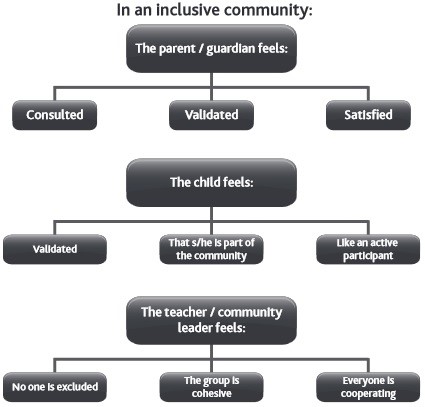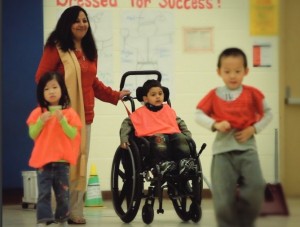Contributed by Jarod Henderson & Michelle Brander (Teacher Candidates)
No matter what we are doing in life, it is every child’s dream to feel included. To have that feeling of being part of a team, being accepted for who they are and not being left out. Unfortunately this is not the case for some students with physical and mental disabilities; but it is our job as educators to create an inclusive and welcoming classroom, where every student can feel like an active participant; specifically talking today in physical activity.
The Ontario Physical and Health Education Association (OPHEA) is a non-profit organization that supports the health and learning of children and youth in Ontario. They are led by the vision that all kids value and enjoy the lifelong benefits of a healthy active living. On their website they have an abundance of teaching tools, articles, workshops and webinars for anyone to access; most of which are free. When we were browsing through their website we came across a great, free .pdf program called “Steps to Inclusion” which focusses on setting up inclusive physical activity for children and youth with physical or mental disabilities.
“Steps to Inclusion” explains that an inclusive environment is one where all children thrive, regardless of ability, culture, gender, interest, learning style or experience. Everyone feels included and appreciated. These types of environments should identify and eliminate barriers, promote a sense of belonging and involves the broad community. Within this inclusive environment we can talk about an inclusive physical education program, whether it is in a school, community center or sport and recreation facility. These types of programs should include activities that are modified to ensure all participants experience success and assistance is available when needed. For these programs to succeed there needs to be a high degree of cooperation/mutual respect and consistent rules regarding safety.
There are 7 steps you need to follow in order to create a successful inclusive environment
Step 1: Understanding Different Disabilities (Cognitive, intellectual, physical)
To be able to properly create a program we must understand the different types of disabilities and the students affected by that. Children diagnosed with cognitive/intellectual disabilities may exhibit delays in measured intelligence, adaptive functioning and academic functioning. Some of these disorders include brain injury, down/turner/triple x/fetal alcohol syndrome and autism. These disorders can interfere with listening, speaking, reading, writing and many other things. A physical disability affects a child’s ability to perform physical activities such as having trouble hearing, seeing, speaking or walking. Some of these disabilities would include asthma, heart conditions, respiratory conditions, cancer, epilepsy, spina bifida, cerebral palsy and muscular dystrophy.
Step 2: Speak with a Parent/Guardian
Before creating a program it is always important to meet and include the parents/guardians in the decision making process. They know their children best and can share a wealth of knowledge for a resource that will be helpful when creating the plan.
Step 3: Complete an Observation/Assessment Record
It is important to gather information about the child such as his or her present functioning level, behaviours and physical capabilities. This type of information is what will be used to make modifications and accommodations when planning the physical activity program.
Step 4: Contact a Support Organization
After the assessment it can then be helpful to contact a support organization that specializes in the particular disability you are including. They provide an expert level of understanding and will help you to support the child.

Step 5: Start Planning
The ultimate goal of the teacher creating this inclusive plan is to integrate the student into the regular physical education class with minimal disruptions in order to achieve maximum success and inclusion within the group. When planning, there are different considerations to take such as “does the student have an IEP, do they have a TA or EA”.
Step 6: Create an Inclusive Environment
To create an inclusive environment it is important to talk with the other children in the class and explain the child’s disability. Show how you would like the children to act, behave, or provide support for the child, so that the child with the disability can feel accepted and a part of the group.
Step 7: Reflection
After the plan is implemented, you can then start to reflect on the group, asking questions like “What does my group look/sound/feel like? Are they playing together cooperatively? Are they helping each other? Do you hear laughter or happy sounds? Do they feel happy, excited or part of a team?
Social and Physical Environment
“Steps to Inclusion” focuses strongly on the social and physical environment pillar of our CSH cohort. For a student with a physical disability, the physical environment plays a large role in their day to day school life and this will be modified or accommodated accordingly. But the social environment plays an even larger part when dealing with inclusion. An inclusion plan involves not only the child with the disability, but the entire class as a whole. Each and every student needs to do their part in creating a sense of acceptance and community. For a program to succeed, all students must feel included.
Inclusion is an important issue that every teacher needs to consider when running their classroom. “Steps to Inclusion” is a great stepping stone for introducing yourself to classroom inclusion and we strongly encourage each and every one of you to use all the great resources OPHEA has to offer.
Resources:
